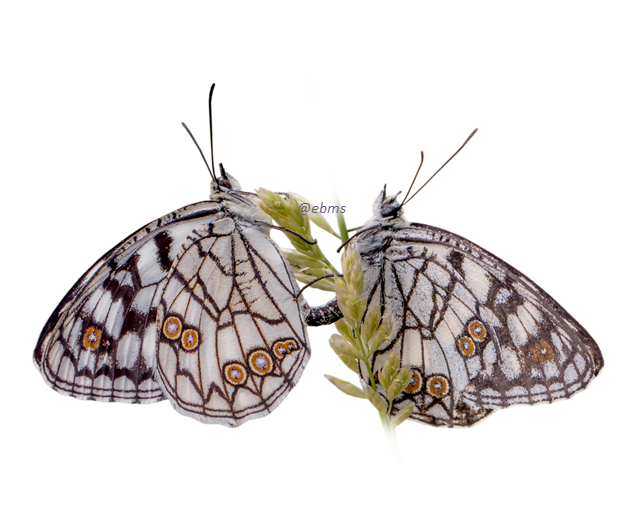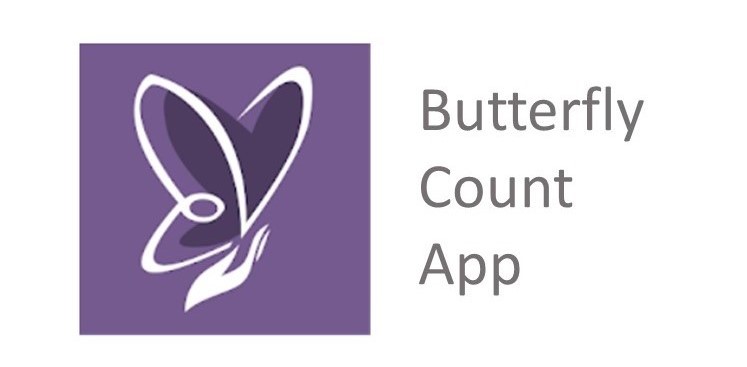Resultados finales
El Proyecto Piloto Europeo ABLE (Assessing Butterflies in Europe) ha concluido con gran éxito y resultados increíbles. Este proyecto ha sido capaz de promover el seguimiento de mariposas en Europa, producir Indicadores de mariposas de alta calidad y herramientas útiles para voluntarios y coordinadores. Para descubrir más sobre el proyecto, puede descargar los diferentes informes de cada tarea ABLE y el Resumen ejecutivo haciendo clic en los siguientes enlaces:
- Resumen ejecutivo (pdf en inglés)
- Informe Tarea 1 - Indicadores de mariposa (pdf en inglés)
- Informe Tarea 2 - Desarrollo de redes (pdf en inglés)
- Informe Tarea 3 - Herramientas
- Resumen de políticas de ABLE (pdf en inglés) , Resumen (español) , Resumen (italiano)
Puede encontrar los resultados de las herramientas ABLE en los enlaces:
- Aplicación eBMS " ButterflyCount " para Android e iOS
- Salidas de eBMS : taller para calcular tendencias de mariposas y el paquete rbms
Desarrollo de esquemas de seguimiento de mariposas en Europa: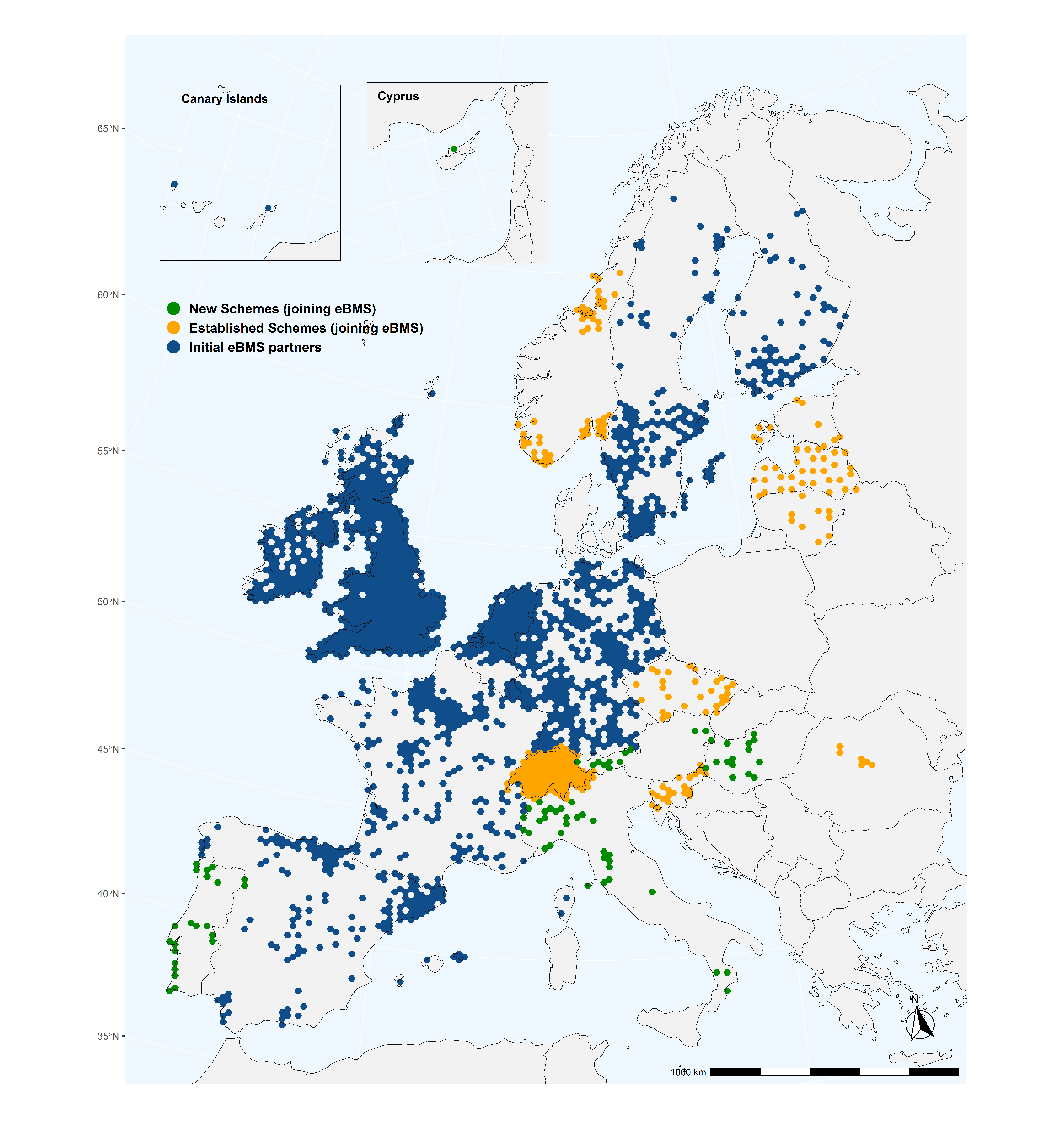
Una de las principales tareas del proyecto ABLE fue el desarrollo de una red representativa de seguimiento de mariposas en toda Europa. Después de dos años de acciones en este Proyecto Piloto, logramos un gran avance involucrando a muchos países y regiones que forman parte de la red eBMS.
During two years of the ABLE project, the main focus was on the creation of new Butterfly Monitoring Schemes (BMS) and including existing schemes in the network and database of eBMS. 10 new BMSs had been created under the ABLE project, expanding monitoring to the south and east of Europe and 7 former BMS joined and shared data to eBMS.
- New BMS created in 2019 were in Portugal, Italy, Hungary, Austria, and Cyprus with a great welcome in the society and many volunteers. In 2020, new BMSs were set up in Croatia, Malta, Bulgaria, and Poland.
- Schemes joined to the eBMS network: Hungary, Italy, Portugal, Romania, Lithuania, Latvia, and Slovenia (2019) and the Czech Republic, Spain, Austria, Norway, and Switzerland (2020) providing data to the central database and increasing the number of transects.
The ABLE project helped several of these schemes promoting butterfly monitoring with several workshops, training seminars, and material for volunteers. Many new butterfly transects have been created these years and many more will start the coming year to cover more European areas and determine better the situation of butterflies in Europe.
From the ABLE team, we thank all the volunteers willing to collaborate and the great effort of the coordinators to get good schemes in their areas. Also to everyone involved in the ABLE project that helped to make good results possible: collaborators, assistants, stakeholders, National and Natural Parks, protected areas, rangers, institutions, experts, MEPs, DG Environment, European Commission, photographers, and every person who collaborated.
We will continue working for butterfly conservation!
The map shows the eBMS network status in Oct.2020 and new BMS created under ABLE (green dots)
Final ABLE Co-ordinator Online Workshop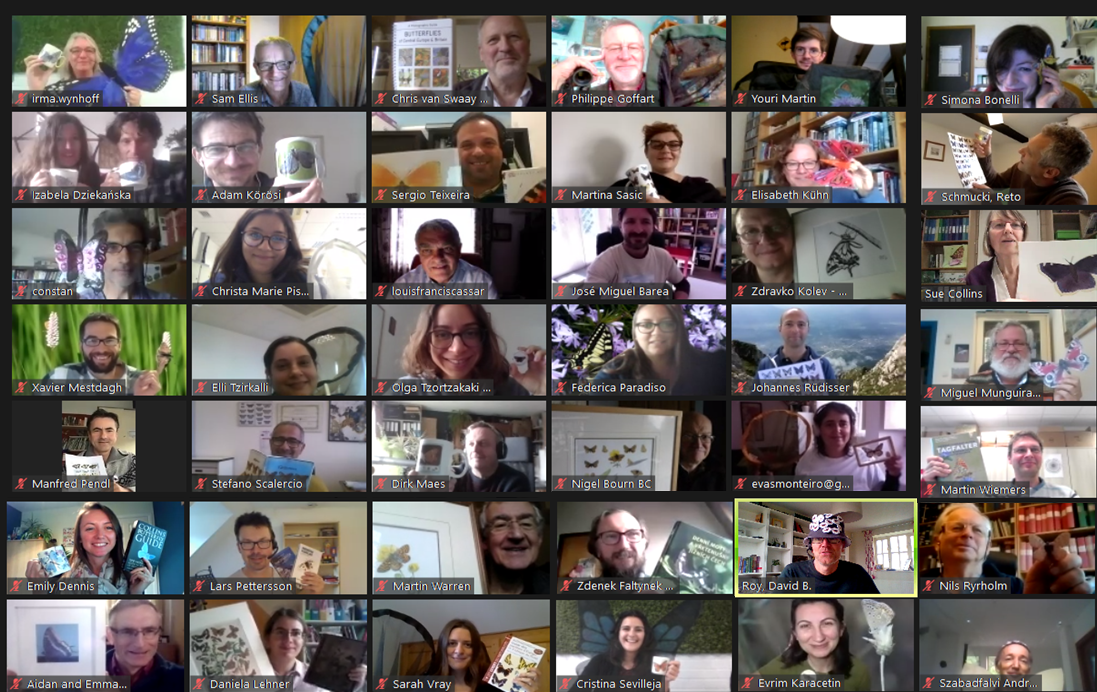
On the 28th and 29th of October 2020, the Final ABLE Co-ordinator online workshop was held with close to 50 participants from 25 different countries. A workshop of two days with several sessions presenting the results of the ABLE project and the goals achieved. It was a great success to discuss with BMS coordinators and the main collaborators of the project, the obtained results, and feedback to improve in the future.
You can find the program of the workshop and the different presentations of the sessions:
- Session 1: Tools and products under ABLE - David B. Roy & Reto Schmucki, UKCEH
- Session 2: Developing the monitoring network - Cristina G. Sevilleja & Irma Wynhoff, Dutch Butterfly Conservation
- Session 4: Results of the new indicators - Chris van Swaay, Dutch BC & Emily Dennis UK BC
- Session 5: Disseminating results: meeting, messages, and opportunities - Sue Collins & Martin Warren, BCE
- Session 6: the new Pollinator Monitoring FRamework - Vujadin Kovacevic, DG Environment
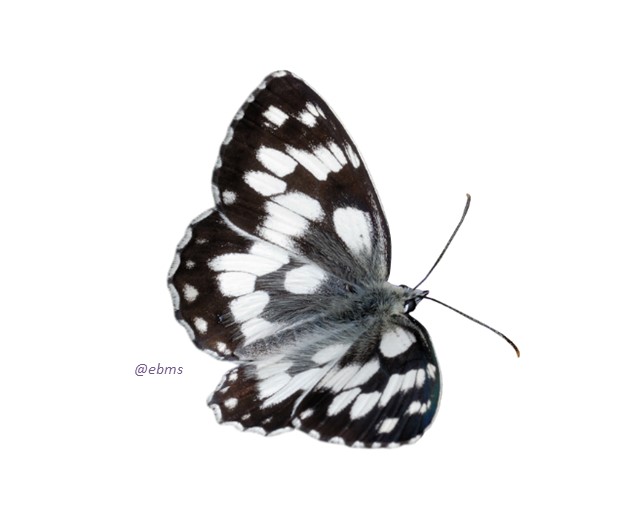 ABLE Newsletter
ABLE Newsletter
-
ABLE Newsletter 2020 - June
The second Newsletter of the ABLE project was produced in June 2020. After a few months from the last release, with this Newsletter you can see all the news of the ABLE project: the Butterfly Monitoring Meeting in Laufen, how the eBMS network grew recently, a series of interviews with volunteers, as the material the Workshops online for calculating trends and identification Guides, the new ButterflyCount app and more.
Link to the online Newsletter 2020 or download the pdf
Newsletter sections: Interview 1- Spain, Interview 2- Hungary, Interview 3- Luxembourg, Interview 4- Portugal, BMS Volunteers Interviews, Laufen Meeting 2019
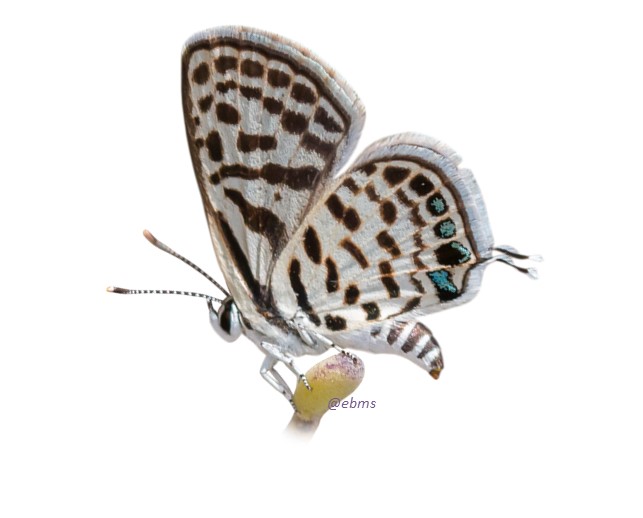
-
ABLE Newsletter 2019
The first Newsletter of the ABLE project was produced in October 2019. In this first release, you can see all the results from one year of work of the ABLE project: how the eBMS network grew in one year, an interview with one of the New Coordinators, access to new monitoring materials for volunteers, and more information about the ABLE results.
Link to the online Newsletter or download the pdf
Newsletter sections: Profile of a new BMS coordinator - ABLE Newsletter 2019, the eBMS Network - ABLE Newsletter 2019, Material and Tools - ABLE NEwsletter 2019, Results - ABLE Newsletter 2019 & The ABLE project and future plans
Material and Tools:
- Field Guides for butterfly Identification
The Field Guides of the ABLE project want to be useful to identify butterflies in the field in an easy and simple way. The butterfly species are organised by families and genus and there are symbols identifying useful characteristics to identify butterflies species easily. We selected the most common species per region reducing the number of species in each Field Guide. This useful material will help volunteers and people involve in butterfly monitoring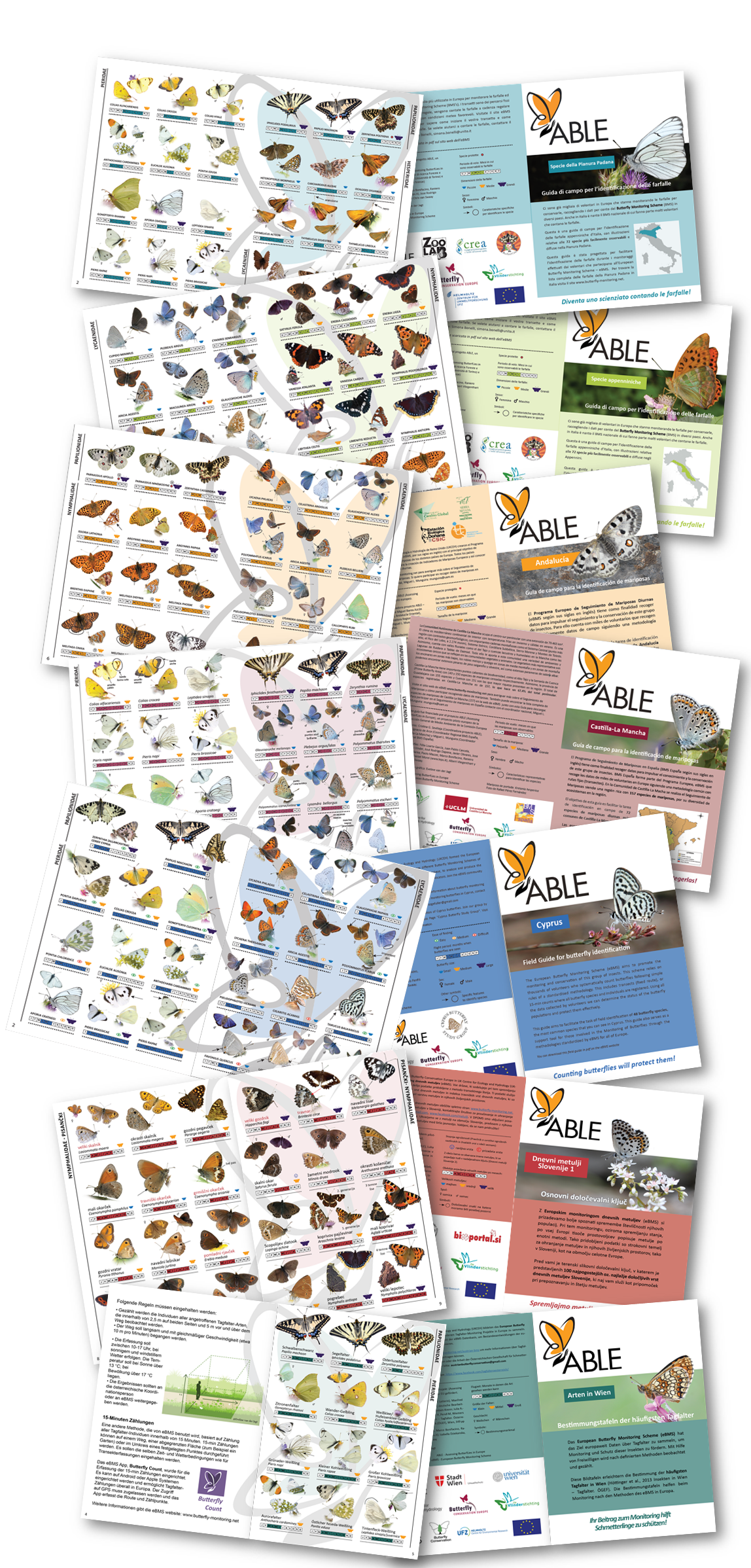
Italy - per regions
Together with the Italian Butterfly Group we divided Italy into climatic regions and selected the 72 most common species in each climatic area. We eventually produced 4 different Field Guides from specific regions. You can download the guides from here and print them directly.
- Field Guide Padana Plain region (IT)
- Field Guide Apennines region (IT)
- Field Guide Mediterranean region (IT)
- Field Guide Mediterranean Islands (IT)
*these field guides are in the Italian language
Field Guide Andalucia - Spain
This Field Guide includes 93 of the most common butterfly species in Andalusia in just 12 pages. This Guide aims to be useful by reducing the number of butterflies in an area as rich and diverse as Andalusia. You can download the guide in pdf and various formats:
- Andalusia Guide (Spanish): to print directly, three sheets to be printed on both sides, the pages are ordered for printing.
- Andalusia guide by pages (Spanish): pdf with individualized pages to download to your device
- Andalusia Guide (English): to print directly, four sheets to be printed on both sides, the pages are ordered for printing.
Field Guide Castilla-La Mancha - Spain
Castilla-La Mancha is a region of the peninsular center of Spain with a great diversity of ecosystems: mountain ranges, wetlands, river valleys good for the diversity of butterflies. You can download the CLM Field Guide guide in pdf format with the 72 most common butterfly species in CLM in 8 pages:
- CLM Guide (Spanish): two sheets to be printed on both sides, the pages are ordered for printing.
- CLM Guide by pages (Spanish): pdf with individualized pages to download to your device or print
- CLM Guide by pages (English): pdf English version of individualized pages to download to your device or print
Field Guide Cyprus
A field guide to identify 48 of the most common butterfly species in Cyprus. This Guide aims to be useful for identifying butterflies in the field in an easy and simple way. Butterflies are divided by families, present symbols to mark specific characteristics with which to identify them and with information about ease to see them. Also, this Guide includes an explanation of the methodologies to monitor butterflies (transects and 15-min Counts).
You can download the pdf guide Field Guide Cyprus (English) directly to your device or print it directly (select booklet option in the printer).
Field Guide Slovenia
Slovenian Butterflies 1 is a national Field Guide showing pictures to identify 100 butterfly species that occur more frequently in diverse ecosystems of Slovenia. This easy and direct Field Guide will help volunteers in butterfly identification and it provides the link to the Second Field Guide, Slovenian Butterflies 2 (in process), with species link between more difficult and similar species. You can download the Field Guide Slovenia 1 in pdf directly to your device or print it directly (select the booklet option in the printer):
How to print the Field Guides:
Select the pdf with 4 pages which you can print in two sheets for both sides. The order of the pages is organised to print them directly. When you have the two sheets printed, just fold the sheets for the middle and organise them following the number of the pages.
Acknowledgments to Paolo Mazzei, Marco Bonifacino, Raniero Panfili y Daniel Morel (www.leps.it); Javier Olivares, Jose Miguel Barea, Félix Loarte García, Juan Pablo Cancela, Mariano Vindel, José Rodrigo Dapena, Rafael Pérez Fernández, Christodoulos Makris, Christos Zoumides, Hasan Bağlar, Kelebek Gözlemi, Akturk Pilanci, Elli Tzirkalli, Luka Šturm, dr. Rudi Verovnik, Barbara Zakšek, Primož Glogovčan, Nika Kogovšek; Izabella Dziekanska, Marcin Sielezniew, Albert Vliegenthart, and Chris van Swaay for providing pictures for the creation of the Field Guides in the ABLE project. Also, to the designer that created the different butterfly shapes from pictures, Eveline van der Jagt and the edition done by Cristina G. Sevilleja.
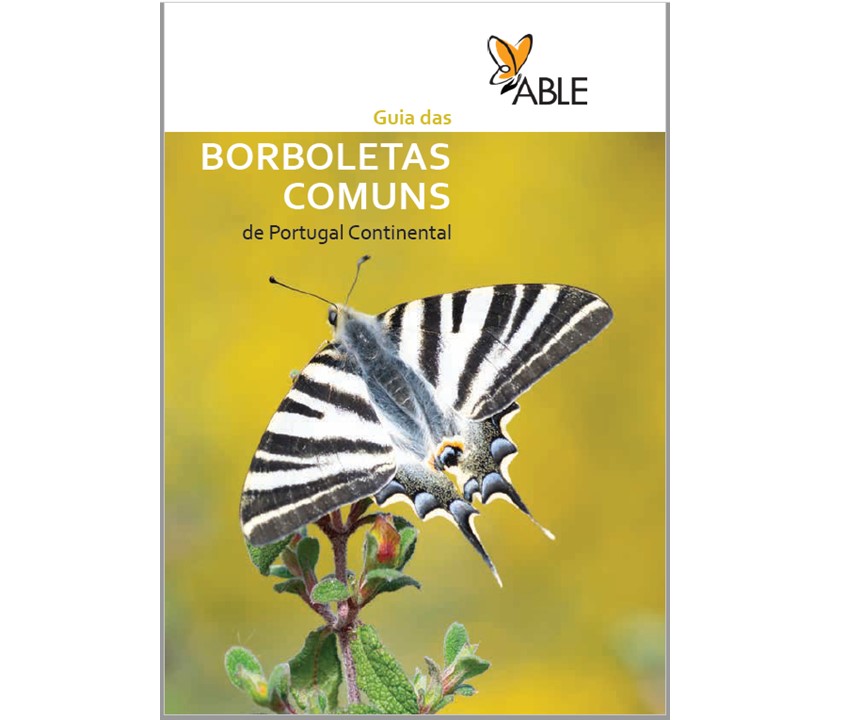
- Booklet Common Species Portugal Continental
This guide illustrates 60 common butterfly species in Portugal Continental and it is a great help for those just beginning to identify butterflies and want to participate in the Butterfly Census of Portugal. This booklet was produced with the ABLE project and with the help of Tagis - Centro de Conservação das Borboletas de Portugal
- Manual for Butterfly Transect Counts
Transect counts are the main method used in the European Butterfly Monitoring Schemes. You can download the Manual for Butterfly Transect Count to learn how to use this method. In this Manual, you will find useful information about monitoring butterflies with the transects including: how to select a place to monitor, where to set up your transect route, which simple rules to follow for a transect visit, and how to submit your records.
This Manual has been adapted for the following languages: Portuguese, Polish (a Manual adaptation for Poland), Spanish, Italian and Bulgarian
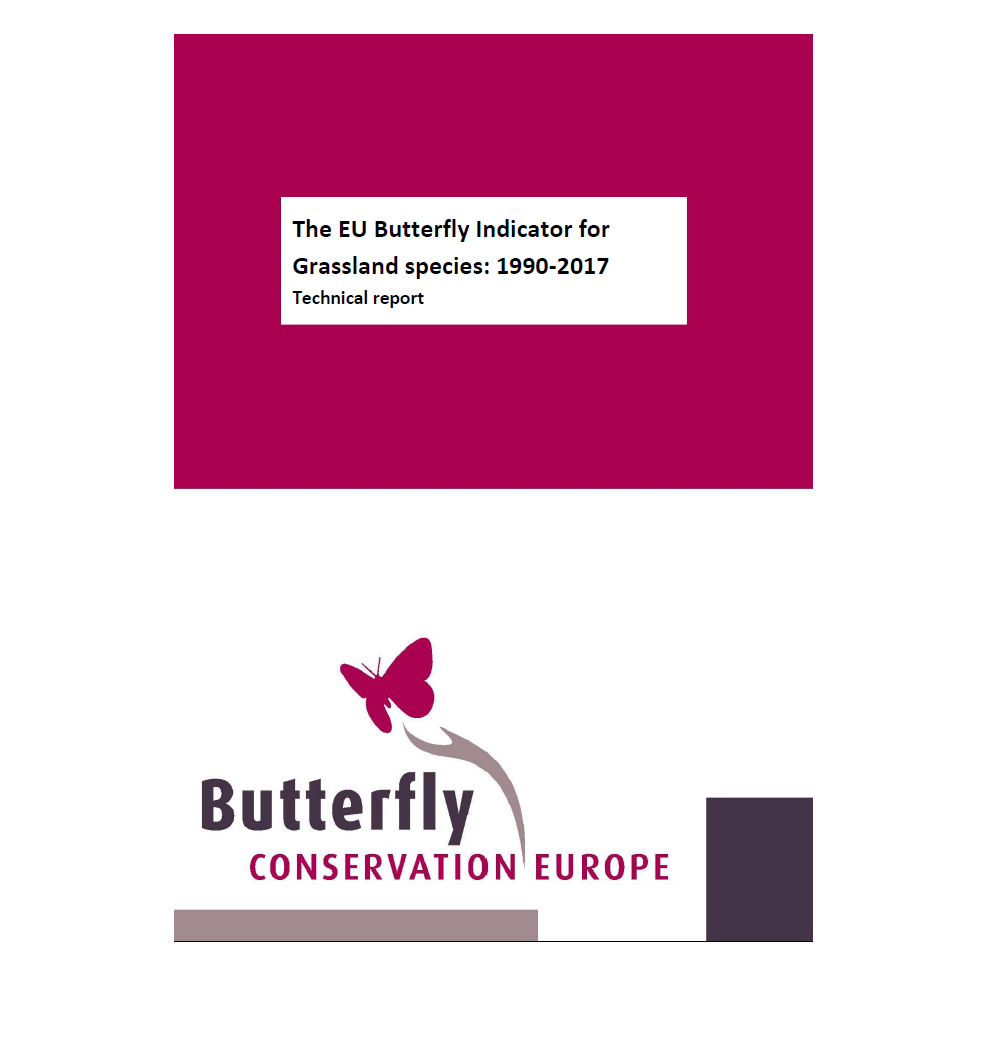
Publications:
- Technical Report EU Butterfly Grassland Species 1990 - 2017
The updated EU Butterfly Indicator for Grassland species, 1990-2017. We produced a technical report to describe the indicator, it represents a major update on previous versions, through the incorporation of more and expanded datasets, together with new analysis techniques. It is the first major output of the Assessing ButterfLies in Europe (ABLE) project. This would not have been possible without the effort of all the collaborators, national schemes, and volunteers that provide the data. Our appreciation to all of them
The EU Butterfly Grassland Species 1990-2017 indicator is part of the monitoring report on progress towards the SDGs in an EU context — 2019 edition, which can be accessed here. The grassland butterfly indicator contributes to Goal 15: Life on Land.
Acknowledgment
From the ABLE team be want to acknowledge all the collaborators that made this project successful and helped us to produce great results. Thanks to all the coordinators, volunteers, rangers, and experts willing to participate and had contributed to the collection of butterfly data and providing essential information; thanks to the coordinators, administrators, and assistants of the different Butterfly Monitoring Schemes in Europe for their dedication and effort improved the eBMS network; thanks to all the stakeholders, and institutions that helped BMS in the promotion of butterfly monitoring in their regions and thank you to the Comisión Europea, MPE y DG Medio Ambiente por financiar este Proyecto Piloto y brindarnos el apoyo para hacer realidad ABLE en la conservación de las mariposas y la biodiversidad.
Gracias


